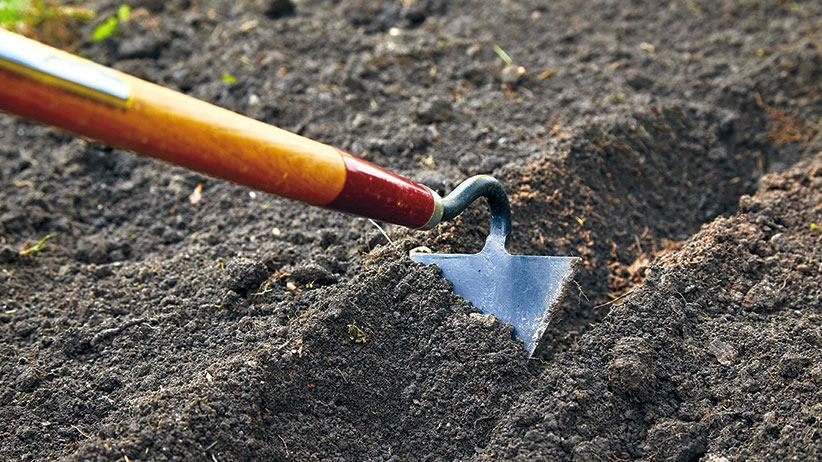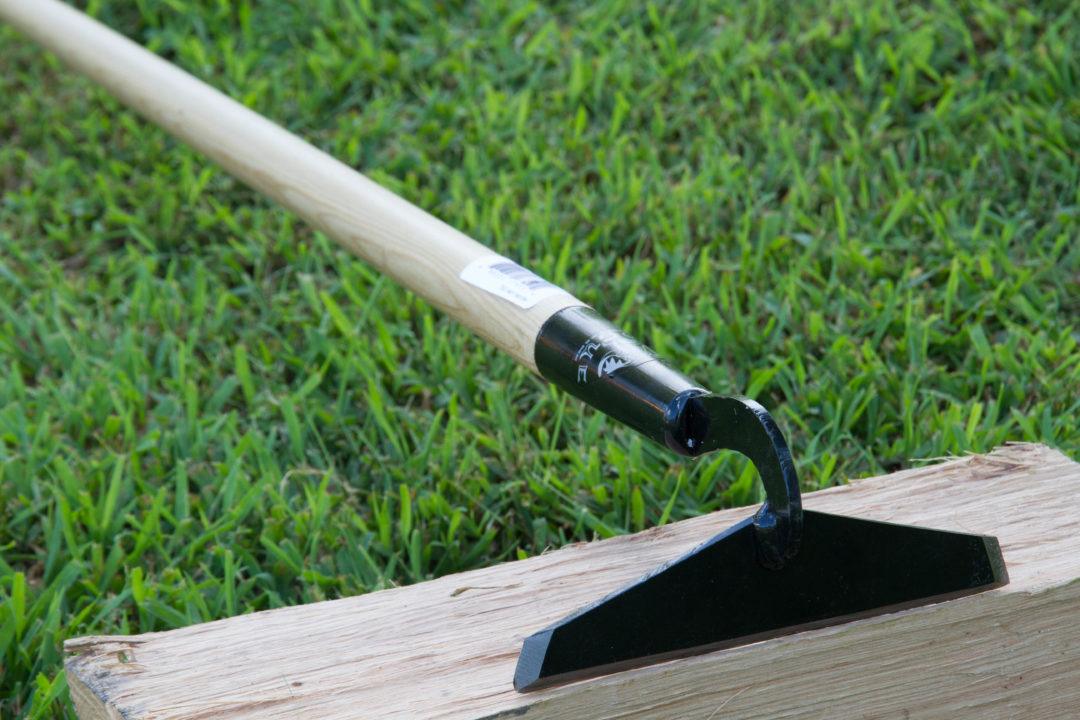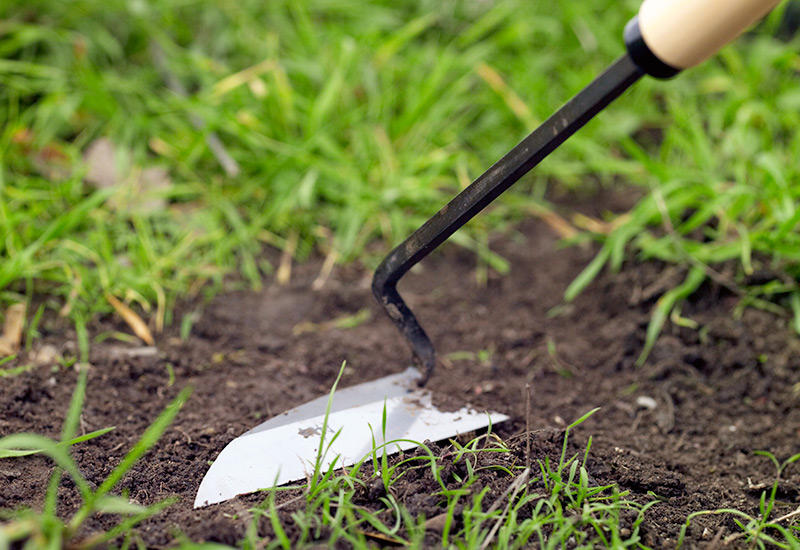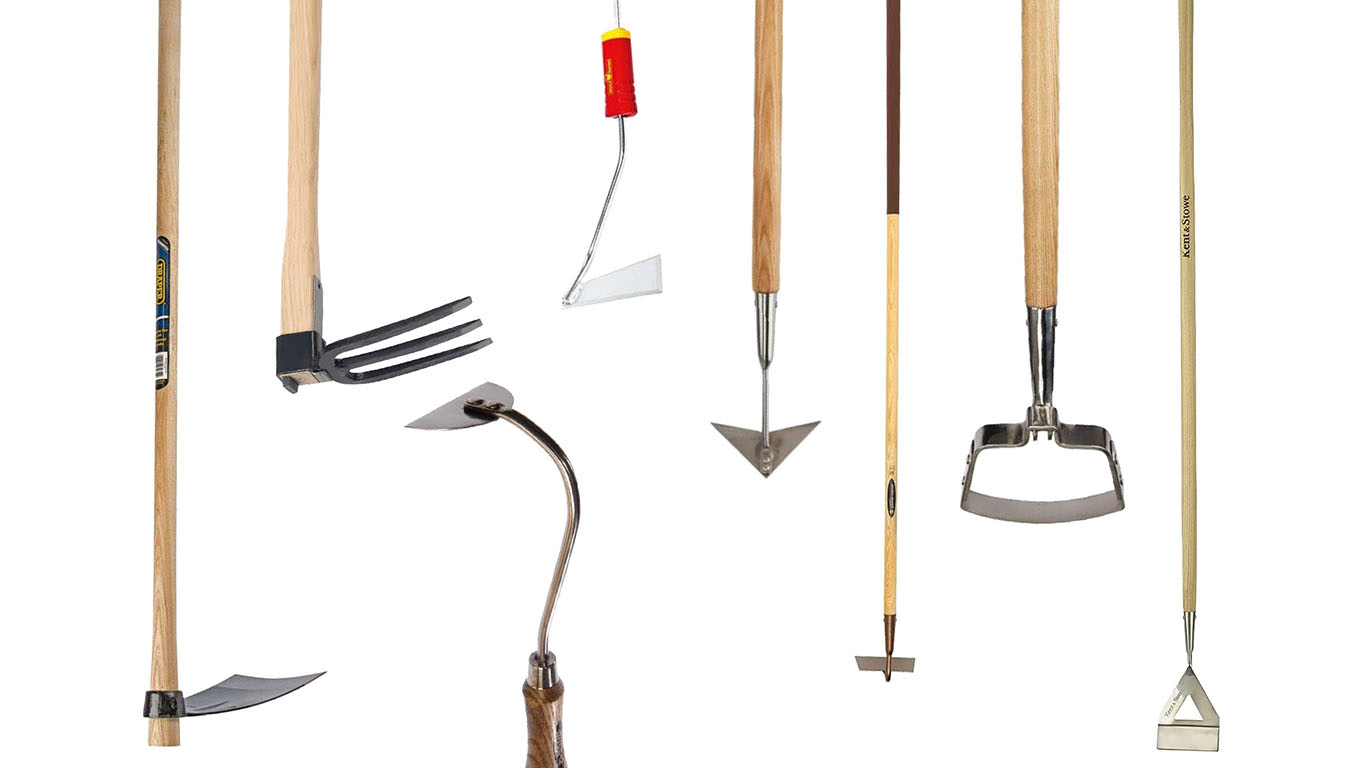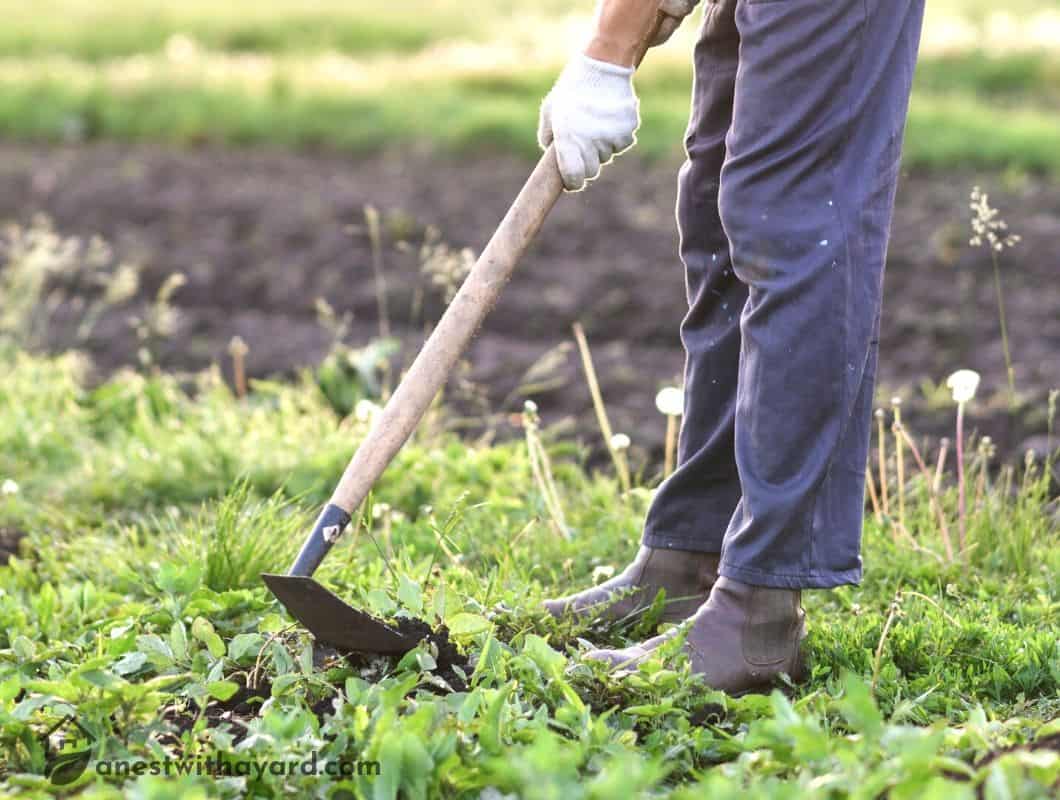What is a Garden Hoe and Why Do You Need One?
In the world of gardening, a garden hoe is an indispensable tool that plays a crucial role in maintaining a healthy and thriving garden. But what does a garden hoe look like, and why is it such a vital addition to your gardening arsenal? A garden hoe is a long, flat blade attached to a handle, designed to make weeding, cultivating, and maintaining a healthy garden a breeze.
The primary purpose of a garden hoe is to remove weeds and unwanted growth from your garden beds, allowing your desired plants to thrive. By using a hoe to slice through the soil, you can easily uproot weeds and prevent them from competing with your crops for water and nutrients. Additionally, a hoe can be used to loosen and aerate the soil, making it easier for roots to grow and for air and water to penetrate.
Having a garden hoe in your toolkit can also save you time and energy in the long run. By regularly weeding and cultivating your garden, you can prevent weeds from taking over and reduce the need for more labor-intensive methods of weed control. This means you can focus on the fun parts of gardening, like watching your plants grow and flourish.
The Anatomy of a Garden Hoe: Key Features to Look For
When it comes to selecting the perfect garden hoe, understanding the typical design and features of this essential tool is crucial. A garden hoe typically consists of three main components: the blade, handle, and grip. Each of these features plays a vital role in the overall functionality of the tool, and understanding their importance can help you make an informed decision when choosing a garden hoe.
The blade of a garden hoe is the flat, curved, or angled part that comes into contact with the soil. It’s responsible for slicing through weeds and cultivating the soil. A high-quality blade should be made from durable materials, such as stainless steel or carbon steel, and should be sharp enough to effectively cut through weeds and soil.
The handle of a garden hoe is the long, straight or curved part that connects the blade to the grip. It should be sturdy, comfortable to hold, and provide sufficient leverage to make weeding and cultivating easier. Handles can be made from various materials, including wood, fiberglass, or aluminum, each with its own advantages and disadvantages.
The grip of a garden hoe is the part that you hold onto while using the tool. It should be comfortable, non-slip, and provide a secure hold, even when your hands are wet or sweaty. A good grip can make a significant difference in the overall usability of the hoe, reducing fatigue and discomfort during extended use.
How to Choose the Right Garden Hoe for Your Gardening Needs
Selecting the perfect garden hoe can be a daunting task, especially with the numerous options available in the market. However, by considering a few key factors, you can find a hoe that meets your specific gardening needs and preferences. One of the primary factors to consider is the size of your garden. If you have a small to medium-sized garden, a smaller, lighter hoe may be ideal, while larger gardens may require a longer, heavier hoe.
Soil type is another crucial factor to consider when choosing a garden hoe. If you have heavy clay or rocky soil, a hoe with a sturdy, heavy-duty blade may be necessary to effectively break up the soil. On the other hand, if you have sandy or loose soil, a lighter, more agile hoe may be more suitable. Additionally, consider the type of plants you are growing and the level of weeding required. For example, if you have a lot of delicate plants, a hoe with a narrower blade may be necessary to avoid damaging them.
Personal preference also plays a significant role in choosing the right garden hoe. Consider the weight, balance, and ergonomics of the hoe. Do you prefer a hoe with a long handle or a shorter one? Do you need a hoe with a comfortable grip or a non-slip handle? Answering these questions can help you narrow down your options and find a hoe that feels comfortable and natural to use.
Finally, consider the material and construction of the hoe. Hoes can be made from a variety of materials, including stainless steel, carbon steel, aluminum, and fiberglass. Each material has its own advantages and disadvantages, and choosing the right one depends on your specific needs and preferences. For example, stainless steel hoes are durable and resistant to rust, while carbon steel hoes are often less expensive and still provide excellent performance.
Types of Garden Hoes: Exploring the Options
When it comes to selecting a garden hoe, it’s essential to understand the different types available in the market. Each type of hoe is designed to cater to specific gardening needs and preferences, and choosing the right one can make a significant difference in your gardening experience. Here are some of the most common types of garden hoes:
Draw Hoes: These hoes feature a long, flat blade that is typically 6-12 inches wide. They are ideal for weeding and cultivating large areas of soil, and are often used in commercial gardening settings. Draw hoes are available in various materials, including stainless steel, carbon steel, and aluminum.
Stirrup Hoes: Also known as “hula hoes,” stirrup hoes feature a curved or angled blade that is designed for weeding and cultivating in tight spaces. They are ideal for use in small gardens, flower beds, and around delicate plants. Stirrup hoes are often lighter and more agile than draw hoes, making them easier to maneuver in tight spaces.
Collinear Hoes: These hoes feature a long, narrow blade that is designed for weeding and cultivating in rows. They are ideal for use in vegetable gardens, where plants are often spaced closely together. Collinear hoes are often more precise than draw hoes, making them ideal for use in areas where precision is key.
Other types of garden hoes include oscillating hoes, which feature a blade that oscillates back and forth to cut weeds; and scuffle hoes, which feature a flat, wide blade that is designed for weeding and cultivating in large areas. Each type of hoe has its unique characteristics and benefits, and choosing the right one depends on your specific gardening needs and preferences.
What to Expect from a High-Quality Garden Hoe
A high-quality garden hoe is an essential investment for any serious gardener. When selecting a garden hoe, it’s crucial to look for certain key characteristics that will ensure the tool provides long-term performance and effectiveness. Here are some of the key features to expect from a high-quality garden hoe:
Durability: A high-quality garden hoe should be built to last, with a sturdy construction that can withstand the rigors of regular use. Look for hoes made from high-quality materials, such as stainless steel or heavy-duty aluminum, that can resist corrosion and wear.
Comfort: A comfortable garden hoe is essential for reducing fatigue and strain during extended use. Look for hoes with ergonomic grips and handles that fit comfortably in the hand, allowing for precise control and maneuverability.
Effectiveness: A high-quality garden hoe should be designed to make quick work of weeding and cultivating tasks. Look for hoes with sharp, precision-ground blades that can easily slice through weeds and soil, making it easy to maintain a healthy and thriving garden.
In addition to these key characteristics, a high-quality garden hoe should also be easy to maintain and store. Look for hoes with rust-resistant coatings and durable handles that can withstand the elements, and consider hoes with compact designs that make them easy to store in a garden shed or toolbox.
By investing in a high-quality garden hoe, gardeners can enjoy a more efficient and enjoyable gardening experience. With the right tool, it’s possible to achieve professional-grade results without breaking the bank or sacrificing precious time and energy.
Real-Life Examples: Popular Garden Hoe Brands and Models
When it comes to selecting a high-quality garden hoe, there are many excellent brands and models to choose from. Here are a few examples of popular garden hoes that are known for their durability, comfort, and effectiveness:
The Fiskars IsoCore Hoe is a popular choice among gardeners, featuring a durable stainless steel blade and a comfortable, ergonomic grip. This hoe is ideal for weeding and cultivating in tight spaces, and its compact design makes it easy to store in a garden shed or toolbox.
The Corona Clipper Hoe is another highly-regarded option, featuring a heavy-duty aluminum blade and a comfortable, cushioned grip. This hoe is designed for heavy-duty use, making it ideal for large gardens and commercial gardening applications.
The Hori Hori Garden Hoe is a unique and innovative option, featuring a curved, serrated blade that is designed for weeding and cultivating in tight spaces. This hoe is ideal for gardeners who need to navigate around delicate plants and tight spaces.
These are just a few examples of the many high-quality garden hoes available on the market. By considering factors such as durability, comfort, and effectiveness, gardeners can find the perfect hoe for their specific needs and preferences.
Conclusion: Finding the Perfect Garden Hoe for Your Gardening Journey
In conclusion, finding the perfect garden hoe is a crucial step in achieving a successful and enjoyable gardening experience. By understanding the purpose and benefits of a garden hoe, as well as the key features to look for, gardeners can make informed decisions when selecting the right tool for their needs.
Whether you’re a seasoned gardener or just starting out, a high-quality garden hoe can make all the difference in maintaining a healthy and thriving garden. By considering factors such as durability, comfort, and effectiveness, gardeners can find a hoe that meets their specific needs and preferences.
Remember, a garden hoe is an investment in your gardening journey, and choosing the right one can lead to years of successful gardening. By following the tips and guidelines outlined in this article, gardeners can find the perfect garden hoe to help them achieve their gardening goals.
Final Tips: Maintaining and Storing Your Garden Hoe
To ensure your garden hoe remains effective and lasts for years to come, proper maintenance and storage are essential. Here are some final tips to keep in mind:
After each use, clean your garden hoe with soap and water to remove any dirt or debris. This will help prevent rust and corrosion, especially if you have a metal blade.
Regularly inspect your garden hoe for signs of wear and tear, such as loose handles or dull blades. Make any necessary repairs or replacements to maintain the tool’s effectiveness.
Store your garden hoe in a dry, protected area, such as a garden shed or toolbox. Avoid storing it in direct sunlight or exposed to the elements, as this can cause damage to the handle or blade.
Consider applying a rust-resistant coating to your garden hoe’s metal components to extend its lifespan.
By following these simple maintenance and storage tips, you can ensure your garden hoe remains a trusted and reliable companion in your gardening journey.



